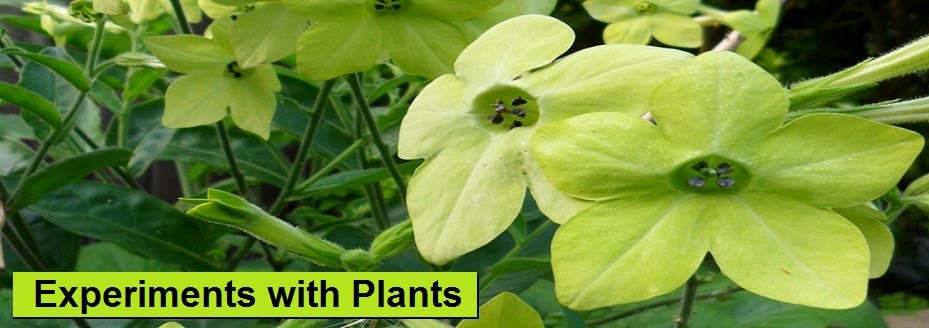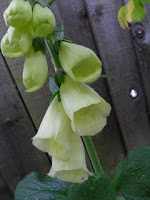| April 2011 - Foxgloves about to bloom in the "woodland" |
The spires of the self-sufficient foxgloves in the woodland grew tall and slender while those in the sunny flower-beds were squat, they would have died without extra watering.
| May 2011 - dappled shade in woodland |
| May 2011 - sunny flower-bed |
However, the experience and experiments were marred by my biggest (gardening) disappointment to date, the appearance of black bean aphids which preferred to suck the juice from the soft buds, stems and leaves of my precious foxgloves over any of the other plants. I held back for a while hoping that ladybirds would feast on them, but they didn't so I resorted to spraying with soapy water, which worked temporarily. When the aphids returned and started to grow wings, I gave up. The puckered damage that they effected didn't stop the foxgloves blooming and producing seeds though.
| black bean aphids grew wings |
| ladybird napping next to a foxglove seedpod |
The majority which bloomed in spring were pink, speckled with burgundy; two of the weaker seedlings which didn't look so promising to start with developed into unique specimens with white and lime-green bells. I harvested their seeds to grow second generation seedlings, still keeping them suspended in the seed-tray to persuade them to develop later and lengthen next year's foxglove-flowering-fest.
In March, before all the photos above were taken, I had sown more seeds from the original packet in preparation for next year's experiments. While most of the other seedlings succumbed to slug attack, the foxglove seedlings were unscathed. I moved them to a sheltered nursery patch, watering them till they settled in, then my attention was distracted by the annuals during late summer and autumn.
As that affair draws to an end, I decided that the foxgloves, which by this time were choking each other and sheltering unimaginable creepy-crawlies, could not be ignored any longer. Last week I dug up the flower-beds, thinned out the foxglove nursery and re-planted the excess all around.
| |
| more foxgloves grown from last year's packet seeds June 2011 |
| foxglove nursery November 2011 |
| foxglove nursery - drying out after thinning |
| ... excess plants transferred to new locations |
So there are more than enough foxglove plants, growing vigorously and suspended, to participate in whatever experiments I plan to conduct next year ...
While contemplating whether or not to rake out the fallen cherry blossom leaves from the woodland before transferring more plants from the nursery, I noticed foxglove plantlets already dispersed right up to the rear wall, children of the two plants in the top photo. According to the results of my 2011 experiment, this area is the prime location in the garden for growing foxgloves, with just the right exposure to shade dappled with sunshine. These conditions, combined with the weedy undergrowth, keep the soil consistently moist.
| parent foxgloves in November 2010 |
| accidental foxgloves - November 2011 |
It struck me how similar the spacing of accidental seedlings compared to my forgotten nursery, maybe it wasn't choked after all. I wonder if foxgloves produce so many seeds intentionally, to create sacrificial plants which only exist to cover the ground and keep it moist for the reproducing ones.
The foxgloves that I raised are more mature and larger than the accidental plants. I could dig up the latter and replace them with a couple of the finest, hand-reared specimens as planned. However, in the grand scheme that might be an accident - I'll leave them be for now.
I'll be linking this post up to Donna's meme Word4Wednesday : ACCIDENTAL.
©Copyright 2011 b-a-g. All rights reserved. Content created by b-a-g for http://experiments-with-plants.blogspot.com/2011/11/foxgloves-29-nov-2011.html




